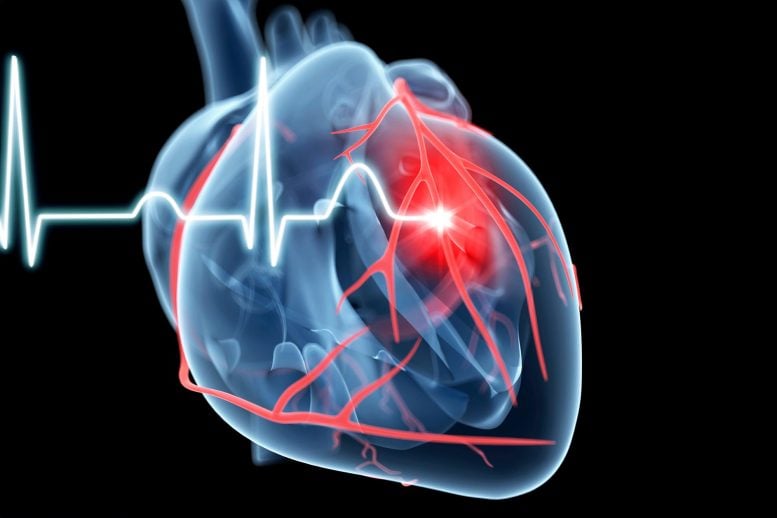

Environmental metal exposure significantly contributes to coronary calcium buildup, comparable to traditional cardiovascular risk factors like smoking.
Research from Columbia University indicates that such exposure not only advances arterial plaque progression but could also herald new prevention and treatment avenues. The study, spanning a decade, found that higher metal levels in urine correlate with increased coronary calcification, suggesting an urgent need for regulatory actions to curb metal exposure and safeguard cardiovascular health.
Metal Exposure and Cardiovascular Risk
Metal exposure from environmental pollution is associated with increased buildup of calcium in the coronary arteries at a level that is comparable to traditional risk factors like smoking and diabetes, according to a study by Columbia University Mailman School of Public Health. The findings support that metals in the body are associated with the progression of plaque buildup in the arteries and potentially provide a new strategy for managing and preventing atherosclerosis. The results were published on September 18 in JACC, the flagship journal of the American College of Cardiology.
“Our findings highlight the importance of considering metal exposure as a significant risk factor for atherosclerosis and cardiovascular disease said Katlyn E. McGraw, PhD, a postdoctoral research scientist in Environmental Health Sciences at Columbia Mailman School and lead author of the study. “This could lead to new prevention and treatment strategies that target metal exposure.”
Understanding Atherosclerosis and Its Triggers
Atherosclerosis is a condition where the arteries become narrowed and hardened due to a buildup of plaque, which can restrict blood flow and cause clots to form. It’s an underlying cause of heart attacks, strokes and peripheral artery disease (PAD), the most common forms of cardiovascular disease (CVD). Atherosclerosis causes coronary artery calcium (CAC), which can be measured non-invasively over time to predict future cardiac events.
Exposure to environmental pollutants like metals is a newly recognized risk factor for CVD, but there isn’t a lot of research on its association with CAC. Scientists in this study sought to determine how urinary metal levels, biomarkers of metal exposure, and internal doses of metals impact CAC.
Study Findings on Metal Exposure and Heart Health
The researchers used data from the Multi-Ethnic Study of Atherosclerosis (MESA), tracking 6,418 men and women aged 45-84 from diverse racial backgrounds free from clinical CVD, to measure urinary metal levels at the beginning of the study in 2000-2002. They examined non-essential (cadmium, tungsten, uranium) and essential (cobalt, copper, zinc) metals, both common in U.S. populations and associated with CVD. Widespread cadmium, tungsten, uranium, cobalt, copper, and zinc pollution occurs from agricultural and industrial uses such as fertilizers, batteries, oil production, welding, mining, and nuclear energy production. Tobacco smoke is the main source of cadmium exposure.
Results provided evidence that metal exposure may be associated with atherosclerosis over 10 years by increasing coronary calcification.
Long-Term Impact and Policy Implications
Comparing the highest to lowest quartile of urinary cadmium, CAC levels were 51 percent higher at baseline and 75 percent higher over the 10-year period. For urinary tungsten, uranium, and cobalt, the corresponding CAC levels over the 10-year period were 45 percent, 39 percent, and 47 percent higher, respectively. For copper and zinc, the corresponding estimates dropped from 55 percent to 33 percent and from 85 percent to 57 percent, respectively, after adjusting for such factors such as cardiovascular risk factors like blood pressure and blood pressure medications, high cholesterol, and diabetes mellitus.
The urinary metal levels also varied by demographic characteristics. Higher urinary metal levels were seen in older participants, Chinese participants, and those with less education. Participants from Los Angeles had markedly higher urinary tungsten and uranium levels, and somewhat higher cadmium, cobalt, and copper levels.
An earlier paper on atherosclerosis (MESA) by the research team studied the methodology for validating ultra-trace element concentrations in urine for small sample volumes in large epidemiological studies. “There are small amounts of these metals found really everywhere but this study truly highlights that even low exposure affects cardiovascular health,” said Kathrin Schilling, PhD, assistant professor of Environmental Health Sciences at Columbia Mailman School. “Even with efforts to control metal exposure in water, air and food, we need to pay more attention to analyzing toxic metals in populations for prevention and intervention of exposure.”
“Pollution is the greatest environmental risk to cardiovascular health,” McGraw said. “Given the widespread occurrence of these metals due to industrial and agricultural activities, this study calls for heightened awareness and regulatory measures to limit exposure and protect cardiovascular health.”
Reference: “Urinary Metal Levels and Coronary Artery Calcification” by Katlyn E. McGraw, Kathrin Schilling, Ronald A. Glabonjat, Marta Galvez-Fernandez, Arce Domingo-Relloso, Irene Martinez-Morata, Miranda R. Jones, Anne Nigra, Wendy S. Post, Joel Kaufman, Maria Tellez-Plaza, Linda Valeri, Elizabeth R. Brown, Richard A. Kronmal, R. Graham Barr, Steven Shea, Ana Navas-Acien and Tiffany R. Sanchez, 18 September 2024, Journal of the American College of Cardiology.
DOI: 10.1016/j.jacc.2024.07.020